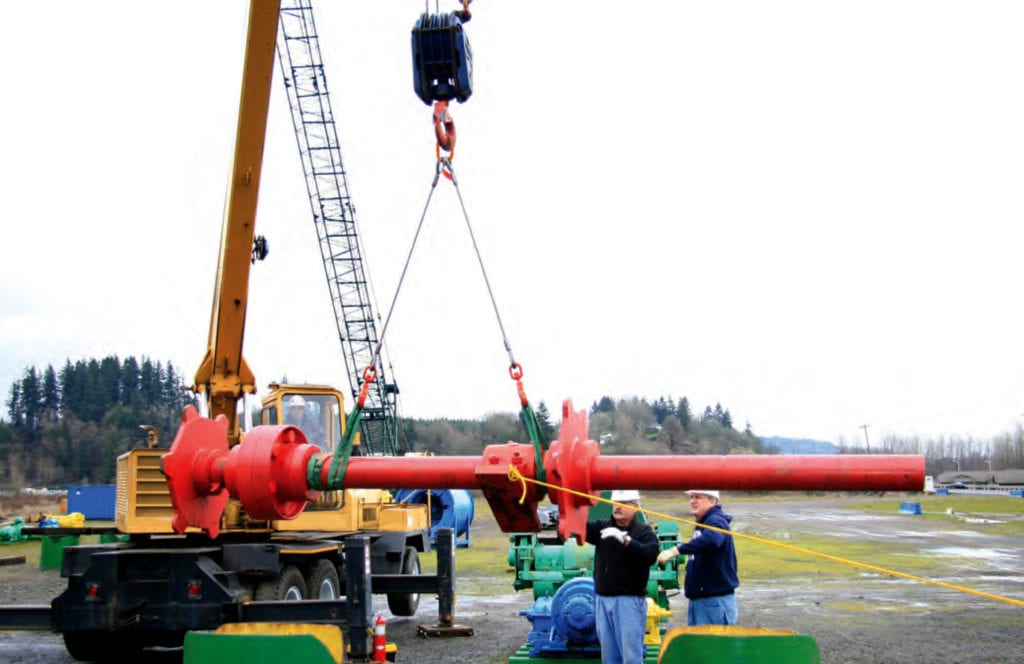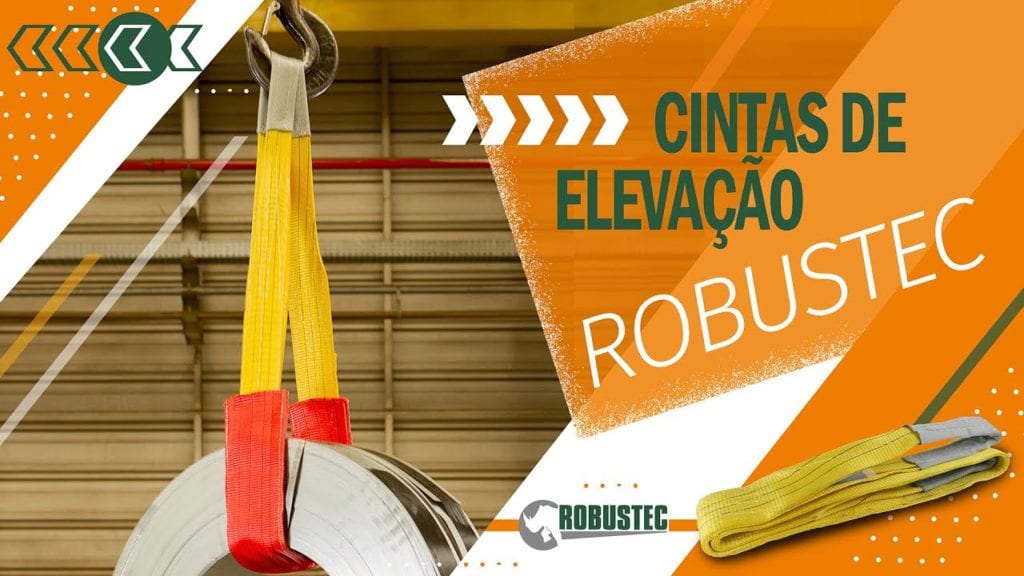No products in the cart.
Straps
Why is it better to use lifting ropes to lift loads?
Lifting loads is an activity that requires many safety precautions to avoid accidents. Using appropriate, certified and quality materials, you guarantee a much more efficient, safe and incident-free operation.
Furthermore, lifting ropes and wire ropes must comply with ABNT safety standards. For lifting operations, the use of equipment other than polyester or nylon slings or steel ropes is prohibited.
Find out how security ropes work
Lifting ropes are the most used and versatile means to connect a load to a lifting equipment, such as winches, overhead cranes, among others.
There are several combinations of lifting means, but they can be summarized in three basic types: chains, wire ropes and synthetic fiber slings. Each of these means has advantages and limitations.
The most recommended means is the flat rope polyester made, due to its load capacity in relation to its weight. In addition, it is relatively flexible and soft, which allows to lift loads without damaging the surface in contact with the sling.
In addition, your safety is guaranteed, due to the high safety factor:
* seven times the nominal capacity, for ropes with reinforced eyelets;
* and four times the nominal capacity, for ropes with metallic accessories.
Load lifting ropes, also known as slings, are capable of lifting large amounts of weight conveniently and safely. Polyester made; they are light but very resistant. Therefore, they are used to replace wire ropes when lifting loads.
The lifting ropes are labeled with information on the Maximum Working Load (CMT), the Safety Factor, the manufacture date, the length, the recommendations for use (back) and the related technical standard. This information must be present in a visible place and also bring the name and CNPJ (tax identification) of the manufacturer and the technical manager.
When buying your sling, you should pay attention to the different lashing types, working angles and use specificities. Also keep in mind that load lifting ropes are different from lashing ropes, having specific features, accessories and safety factors for this type of operation.
The equipment used should never exceed the limits specified by the manufacturer on the product labels. They bring information such as safe working load (CST), minimum breaking load (CRM) and safety factor (FS). If the belt capacity is 1 ton, the maximum safe load on the belt is 1 ton, regardless of the capacity of its safety factor (breaking load).
The label on the tape contains a traceability code, which associates the product with test laboratory reports and legislation that facilitate its identification.
In addition to identifying the capacity on the label, the user can also pay attention to the standard color code, another standard requirement. Each strap color makes it easy to identify the weight limit it supports.
Learn about the advantages of using lifting ropes
Easy to use, the lifting ropes facilitate daily work and guarantee the safety of the products and people involved in the operations.
The loads’ corners cause significant problems for the lifting gear. Wire ropes, for example, can warp or form folds or dents. Legislation requires the wire rope to be discarded when such a defect is identified. The rope, due to its malleability, has the ability to return to its initial state after use.
Made in a single or double layer, the lifting ropes have a circular shape that allows their movement, even when they are turned. In addition, its shape allows to alternate contact points, distributing wear and increasing the product’s life.
The sling is much lighter than other lifting materials of the same capacity, such as wire ropes and chains. In addition, it does not require lubrication, which makes the operator’s job easier. Besides being lighter, it provides greater load capacity to the system.
By presenting the same resistance with a lower weight, they also favor ergonomics and help to preserve the workers’ health and prevent injuries.
The sling also stands out for its malleability. This product can be folded when stored and takes up much less storage volume compared to wire ropes and chains.
Another advantage is the absence of friction between the rope and the load. Textile ropes offer no risk of damaging load, marking packaging or scratching painted parts. Due to its width, the belt provides a greater contact area with the load, distributing the stresses so as not to cause damage. The same is not the case when using wire ropes and chains.
Textile lifting ropes are safe to handle as they are made of multifilament synthetic fibers. Therefore, they do not hurt the operators’ hands.
In addition, the ropes are sold at more affordable prices, with an excellent cost/benefit ratio.
Know how to comply with safety regulations
To guarantee the people’s safety involved in the operations and maintain the products’ integrity, try to use lifting ropes duly certified by ABNT. The technical standard NBR 15637 regulates the criteria for lifting ropes and establishes the obligation to identify the load capacity on the product label.
According to the standard, the selected rope must support the load, be strong enough and have the correct length for the use mode. It must be produced entirely from high tenacity multifilament synthetic yarns, guaranteed by the manufacturer as stable to light and temperature, with tenacity greater than or equal to 60 cN/tex.
Another important requirement is the safety factor. A 7:1 safety factor applies to ropes without accessories (minimum seven times the maximum working load). For ropes used with accessories, the safety factor is at least 4:1 (minimum four times the CMT), depending on the accessory.
All Robustec’s lifting ropes have a safety factor of 4:1 or 7:1 and are guaranteed by the ABNT NBR 15637-1 standard. Furthermore, this equipment complies with the standards established by ISO 9001:2008.
As we have seen, with the use of lifting ropes, the operations are carried out with great safety and without damaging the elevated loads.
Did you like this article? Do you want to know more about the Robustec lifting ropes uses? Download our complete eBook!



